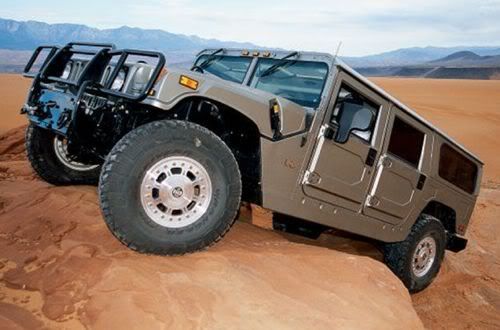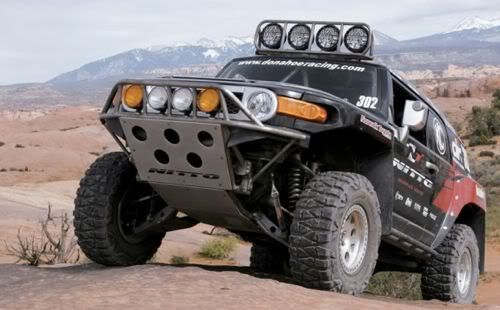You are using an out of date browser. It may not display this or other websites correctly.
You should upgrade or use an alternative browser.
You should upgrade or use an alternative browser.
Solid axle vs. IFS
- Thread starter BPage
- Start date
RHINO
Expedition Leader
can someone enlighten me to the pro's and con's with regard to expedition travel and light to medium exploration within the states?
i think the differences have been talked about just fine,,, pros and cons to your intended use based on the above,,,, not much. i have both, i like the solid axle but i also like leaf springs and old iron so its more a romance thing for me. again based on the above usage i'd say buy the rig you want and dont worry too much about the axle config.
Last edited:
Mr. Leary
Glamping Excursionaire
blah, blah, blah.... the answer to everything = it depends.
Many of the limitations of IFS have been addressed throughout the years, except one... strength. The simple fact is, IFS setups are inherently weaker, and less suitable for big meat. I think tire size is more of a determining factor than anything else. If you run lockers and have IFS, better keep it small or risk breaking down in BFE. IMO, whether you have lockers or not matters more than IFS vs. solid. "Beefing up" an IFS setup is kinda like putting lipstick on a pig!
Advantage.... a guy in TTR here in texas can change a CV axle in about 10 minutes. Break a solid axle shaft, you are stuck for a while.
Break a CV, and you can still get home.
Many of the limitations of IFS have been addressed throughout the years, except one... strength. The simple fact is, IFS setups are inherently weaker, and less suitable for big meat. I think tire size is more of a determining factor than anything else. If you run lockers and have IFS, better keep it small or risk breaking down in BFE. IMO, whether you have lockers or not matters more than IFS vs. solid. "Beefing up" an IFS setup is kinda like putting lipstick on a pig!
Advantage.... a guy in TTR here in texas can change a CV axle in about 10 minutes. Break a solid axle shaft, you are stuck for a while.
Break a CV, and you can still get home.
Roadlesstraveled
New member
Long Travel IFS
For many years now the dune buggy and baja market have been perfecting the long travel independent suspension. I have seen recent moves in the rock crawling sector toward this and it is exciting. Not exciting enough to keep me from wanting a Dana 60 under the front of my 95 Montero SR, but still exciting.
For many years now the dune buggy and baja market have been perfecting the long travel independent suspension. I have seen recent moves in the rock crawling sector toward this and it is exciting. Not exciting enough to keep me from wanting a Dana 60 under the front of my 95 Montero SR, but still exciting.
ntsqd
Heretic Car Camper
They eat tires because people don't put enough quality damping on them, not because of any inherent problem with them. The shock that works for a live axle on leaf springs will be woefully under-damped on a TTB.are we talking the twin i beams?
i thought it was great in theory. expensive to get even remotely close to aligned though. tire eaters, they are.
yea i like it, tons of cheap suspension travel, strong as sold, rides like ifsI prefer Ford's TTB system.
just dosnt flex like a solid in the rocks as easily
twin traction beam, i think twin i beam is the 2wd, but generally same thingare we talking the twin i beams?
i thought it was great in theory. expensive to get even remotely close to aligned though. tire eaters, they are.
and they dont cost any more to align, some shops charge more, just dont go there. But as for tire wearers, if you have half a brain and take care of your truck they don't ruin tires.
007
Explorer
The answer is 34, 34 inches to be exact. 
If it is advantages to run a tire that is 34" or smaller, than a IFS sytem will net the most overall advantage. (clearance, speed, comfort, and control.)
But if you have the need to run a tire over 34" tall then you will most likely prefer the solid axle for added strength and articulation. Plus the clearance for the front diff is less of an issue with a plus 34" tire.
I see my expedition platform staying on 33's for practicality and behaving more as a rally car than a rock buggy most times.
If it is advantages to run a tire that is 34" or smaller, than a IFS sytem will net the most overall advantage. (clearance, speed, comfort, and control.)
But if you have the need to run a tire over 34" tall then you will most likely prefer the solid axle for added strength and articulation. Plus the clearance for the front diff is less of an issue with a plus 34" tire.
I see my expedition platform staying on 33's for practicality and behaving more as a rally car than a rock buggy most times.
Root Moose
Expedition Leader
They eat tires because people don't put enough quality damping on them, not because of any inherent problem with them. The shock that works for a live axle on leaf springs will be woefully under-damped on a TTB.
This is correct.
On road TTB will be at static/steady state most of the time, OR the perturbations are such that there will be little wheel movement (relatively speaking).
With TTB the camber change curve is large with larger movement of the suspension. This is what leads to the uneven wear across the contact patch.
Stiffer dampers will lessen the amount of suspension cycling but may make the ride feel too firm for most tastes. I drive sports cars so a firm ride in a truck has never bothered me provided the suspension actually worked versus skittering over obstacles (think unloaded one ton truck).
Edit: another thing that got the TTB a bad reputation was sagging springs that subsequent owners saw in the used market. All springs sag with age/usage, TTB would show wear patterns because of it. If the spring has sagged an appreciable amount over the stock configuration then no alignment would fix the tires being worn prematurely. It's geometry... least wear has the axle shafts and tire contact patch parallel to the ground at steady state - making allowances for alignment values of camber of course.
Back to the OP...
IFS and solid axle have their places.
In my opinion the best solid axle suspensions are four link systems. They control the caster change curve properly with suspension cycle while keeping the loads equally distributed across the chassis. All the modern solid axle Jeeps use these systems (AFAICR). Those crazy Renault guys that owned AMC in the 80s knew what they were doing when they designed the Quadra-Link system for Jeep. I'm at a loss for other manufacturers that use a four link system. There must be some?
Radius arms are more common on solid axle trucks. They have quirks but are simple in design, construction and are light years ahead of leaf springs for ride quality (I'm speaking stock for stock setup like say a FSJ versus a FZJ80).
Other solid axle vehicles that use radius arms: Defenders, FZJ80, G-Wagen, Discovery.
Leaf sprung solid axle trucks can work too given enough effort. I'm not a fan of leafs on the front axle unless you like the "period" or "vintage" wheeling rig or are trying to keep it stock. I'll do a coil front suspension on my YJ when I turn my attention to it. I'd run leaves before IFS given a choice.
IFS can be perfectly suitable depending on the various usage constraints discussed in the posts above. If you pursue IFS make sure that the suspension is a proper SLA (short long arm or double A-arm) setup. Struts have no place on a vehicle where there is a lot suspension travel required (i.e. trucks). Strut suspensions suffer from problems similar to the TTB without a whole lot of "win" versus the TTB.
If you are not going to build a hard core wheeling rig (you're here versus a wheeling site so I'm guessing not) then pick your vehicle based upon features, not suspension per se. Sure a good ride is important, but so is engine type, reliability, cargo space, etc.
$0.02
Last edited:
Desolation
Adventurer
They eat tires because people don't put enough quality damping on them, not because of any inherent problem with them. The shock that works for a live axle on leaf springs will be woefully under-damped on a TTB.
What he said!
The ride height geometry, spring, and shock values must be correct.
Forum statistics
Members online
- rochmpr
- Farfrumwork
- archom
- 450fox
- camperthingy
- badm0t0rfinger
- shouldaboughtahat
- chopyourown
- NOPEC
- DirtElk
- Paul_Sak
- shellb
- Dan Grec
- clift_d
- Phessor
- andthekids
- MatttheHatt
- YukonMontanaTannerTrapper
- OVRLNDFX4
- smitrov
- the deputy
- retiredruralmailman
- steve2514
- bsracing1
- Chasingopenspaces
- K9LTW
- Marklark
- mtaylo32
- mark5280
- Jack Mac
- Pizza37
- grizzlypath
- wild1
- Victorian
- benSan
- Todd n Natalie
- dauffy
Total: 612 (members: 38, guests: 574)



